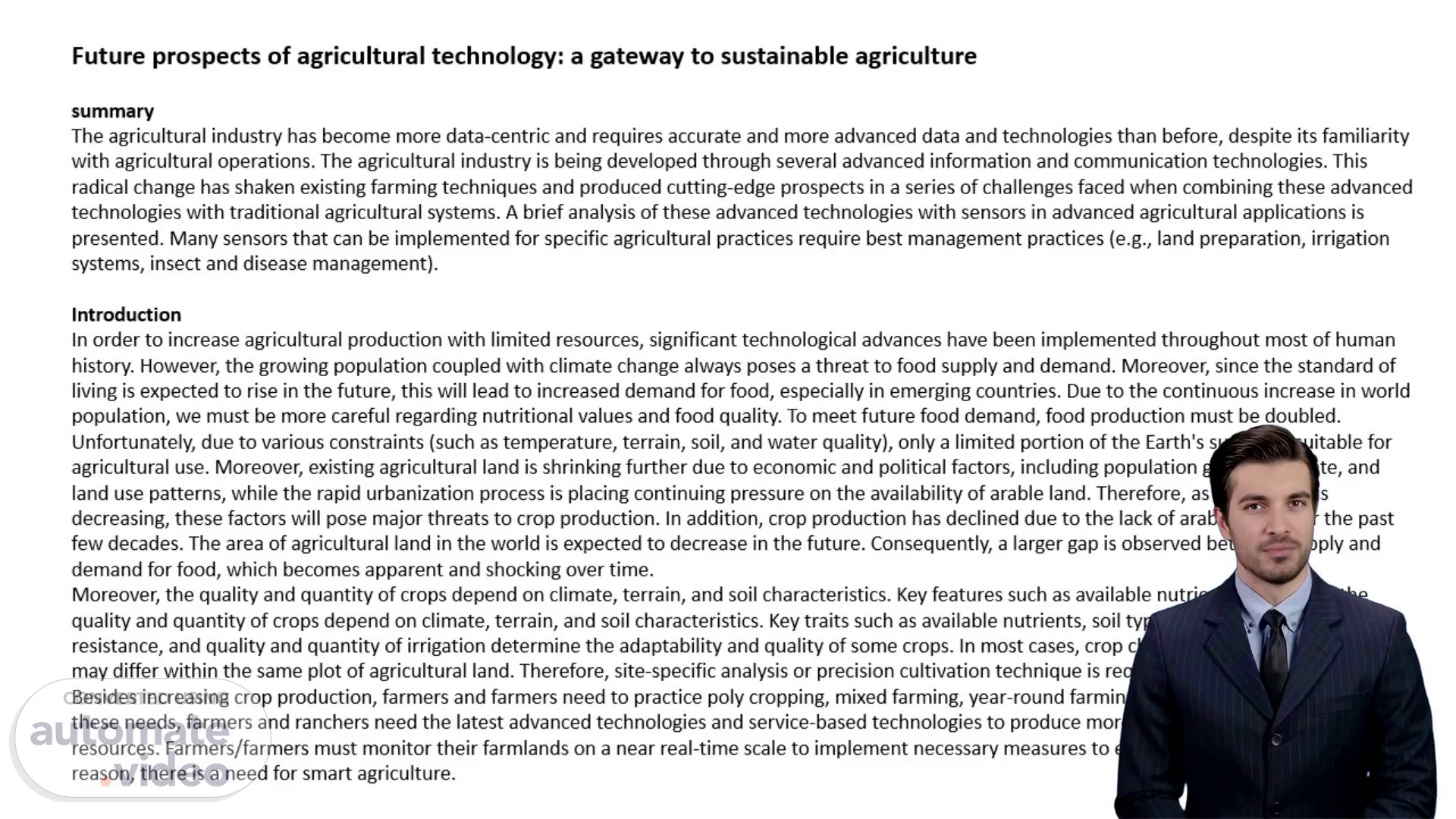
PowerPoint Presentation
Scene 1 (0s)
[Virtual Presenter] The agricultural industry is rapidly evolving and the introduction of advanced information and communication technologies has enabled it to increase production with limited resources. However, this has also resulted in a number of challenges when it comes to combining traditional agricultural systems with cutting-edge technologies. Sensors must be considered in advanced agricultural applications, as well as solutions to best manage land preparation, irrigation systems, insect and disease management. With the continuous increase in the world population, there is a need to produce higher-quality food with higher nutritional value to meet future food demand. Despite various constraints such as temperature, terrain, soil, and water quality, it is essential to find ways to maximize and maximize production on limited agricultural land, while also ensuring its sustainability..
Scene 2 (56s)
[Audio] In spite of the promise of improved agricultural production through advances in information and communication technologies, there are challenges arising from the integration of traditional agricultural systems with these new technologies. Automation can be utilized to make better use of labor and resources, increasing crop yields and ensuring high quality. Additionally, chemical inputs, water, and the use of pesticides can be monitored to ensure optimal production and distribution. All the while, the climate, weather, and geographic conditions must be taken into account for maximum benefit to be gained from these technologies..
Scene 3 (1m 35s)
[Audio] Agriculture is making strides with the integration of modern information and communication technologies, enabling us to maximize our resources. But we are also confronted with a new set of issues as these technologies are blended with more conventional solutions. Through the use of technology, we can keep track of variables like soil moisture and quality, plant diseases, animal populations, and even the equipment necessary for farming. Technology also allows us to provide various services like irrigation, soil preparation, fertilizer, pesticide, fungicide, herbicide, crop yield and storage, as well as measuring the temperature, leaf, stem, fruit size, root, estrus and animal feed intake. That concludes the presentation. Appreciate everyone for giving their time and attention..